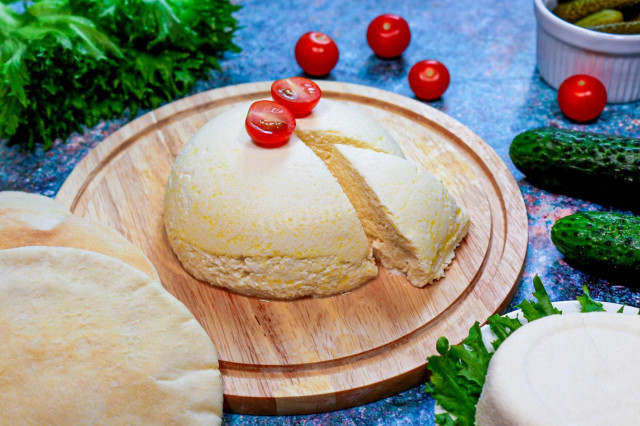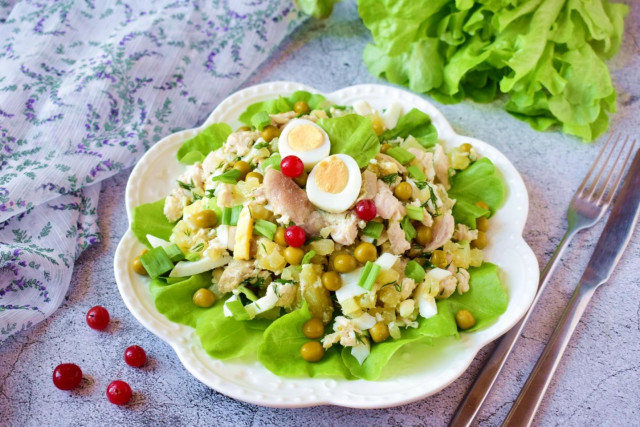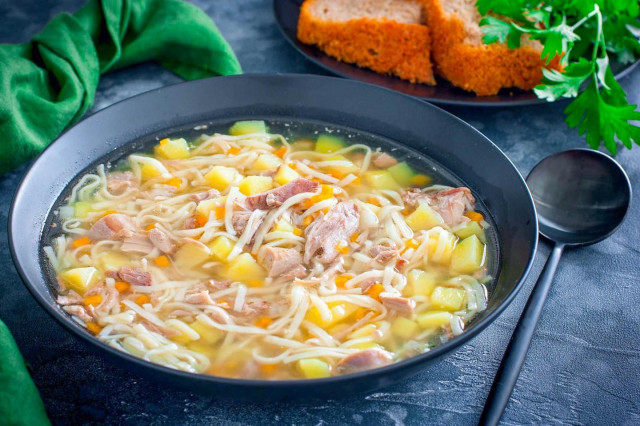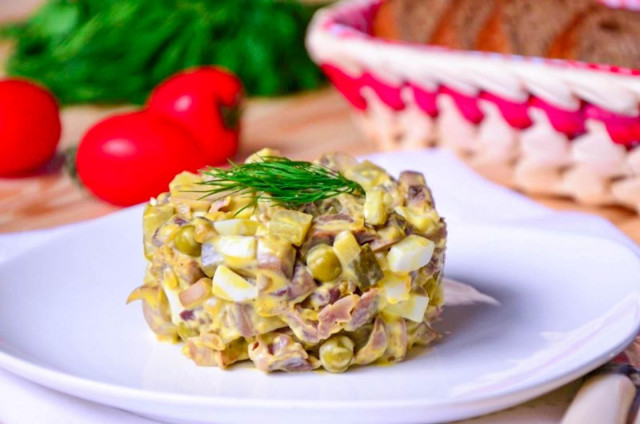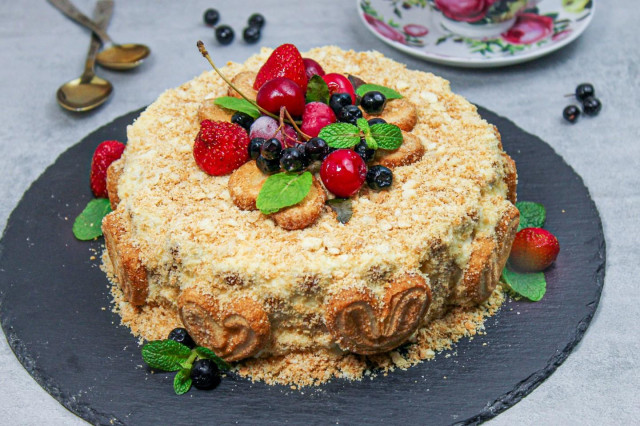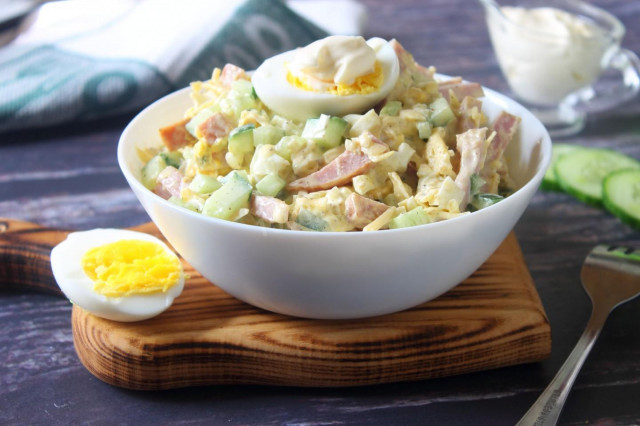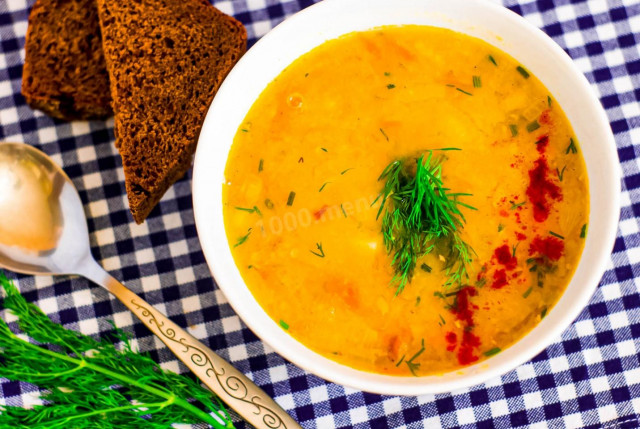Composition / ingredients
Step-by-step cooking
Step 1:
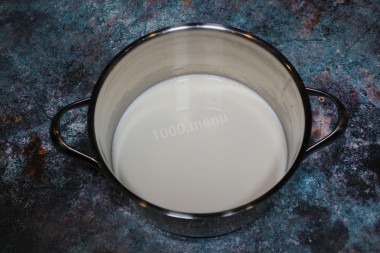
How to make homemade suluguni cheese? Prepare all the necessary ingredients. The most successful milk for making cheese is homemade. If you only have a store option, then choose it with a minimum shelf life, not sterilized. The minimum fat content is 3.2%. Cottage cheese is also better to take fatter, 9% minimum, it should be of good quality, without milk fat substitutes.
Step 2:
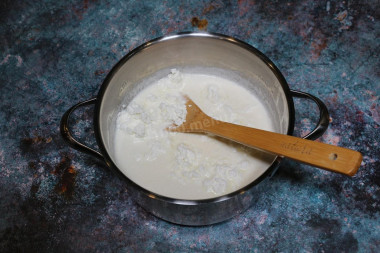
Take a large saucepan with a thick bottom, pour milk into it, bring it to a boil. Then put the cottage cheese in a saucepan with milk in parts. Continue to cook the milk-curd mass over low heat, stirring constantly so that nothing burns. Cook for 4-5 minutes until the whey separates.
Step 3:
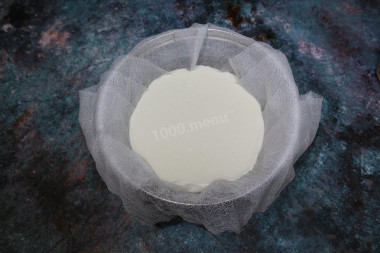
Next, take another deep container or pan and place a sieve on it, put gauze on top of the sieve. Strain the resulting mixture.
Step 4:

When the whey drains, put the cheese mass in a clean saucepan. Add chicken eggs, put soft butter, add soda and salt. Mix all the ingredients thoroughly. Put the pan on a low heat and simmer the cheese for another 10-15 minutes, stirring it constantly. Then remove the pan from the heat.
Step 5:

Take a container in which the cheese will be "cooked", preferably deep, such as a bowl or container. Brush it with butter and put the cheese mass in it. Put the container of cheese in the refrigerator for 2-3 hours, preferably overnight.
Step 6:
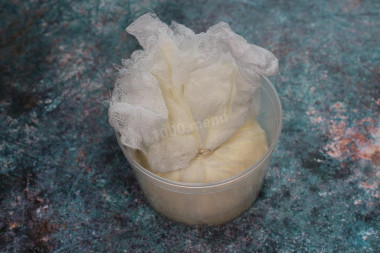
For the experiment, I left some curd-milk mass, took a small container and put gauze in it. I poured the cheese mass into this container and tied the gauze tightly on top with an elastic band. Then this container with cheese was also sent to the refrigerator. As a result, the cheese acquired an interesting shape and, due to the presence of gauze, a beautiful texture.
Step 7:
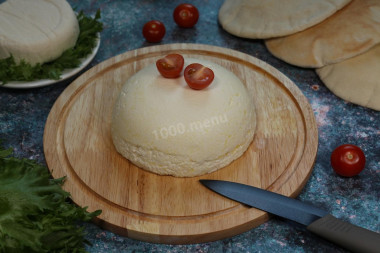
After the required time has elapsed, remove the container with suluguni and carefully remove the cheese from the mold. Enjoy your meal!
Suluguni is a cheese originally from Georgia. It is a lightly salted brine cheese. It can be consumed independently as a snack, or you can cook a large number of different dishes using this cheese. For example, khachapuri, fried suluguni, achma, various vegetable salads using this wonderful cheese, pies and much more.
Be sure to wash the eggs before use, as even the seemingly clean shell may contain harmful bacteria. It is best to use food detergents and a brush.
How do I know if an egg is fresh? Break it into a separate container. First of all, there should be no unpleasant smell. The protein of fresh eggs will be transparent and clean. The yolk should not spread and will be shiny, convex, homogeneous.
Since the degree of salinity, sweetness, bitterness, sharpness, acid, burning is individual for everyone, always add spices, spices and seasonings, focusing on your taste! If you put some of the seasonings for the first time, then keep in mind that there are spices that it is especially important not to shift (for example, chili pepper).
Caloric content of the products possible in the composition of the dish
- Whole cow's milk - 68 kcal/100g
- Milk 3.5% fat content - 64 kcal/100g
- Milk 3.2% fat content - 60 kcal/100g
- Milk 1.5% fat content - 47 kcal/100g
- Concentrated milk 7.5% fat content - 140 kcal/100g
- Milk 2.5% fat content - 54 kcal/100g
- Cottage cheese of 40% fat content - 466 kcal/100g
- Cottage cheese of 20% fat content - 233 kcal/100g
- Cottage cheese of 18% fat content - 226 kcal/100g
- Cottage cheese of 10% fat content - 156 kcal/100g
- Low-fat cottage cheese - 75 kcal/100g
- Cottage cheese with sour cream - 260 kcal/100g
- Fruit cottage cheese - 147 kcal/100g
- Soft dietary cottage cheese - 170 kcal/100g
- Cottage cheese "vitalinia" - 64 kcal/100g
- Cottage cheese "morning" ( "danone") without sugar - 91 kcal/100g
- Cottage cheese - 156 kcal/100g
- Butter 82% - 734 kcal/100g
- Amateur unsalted butter - 709 kcal/100g
- Unsalted peasant butter - 661 kcal/100g
- Peasant salted butter - 652 kcal/100g
- Melted butter - 869 kcal/100g
- Salt - 0 kcal/100g
- Baking soda - 0 kcal/100g
- Chicken egg - 80 kcal/100g

